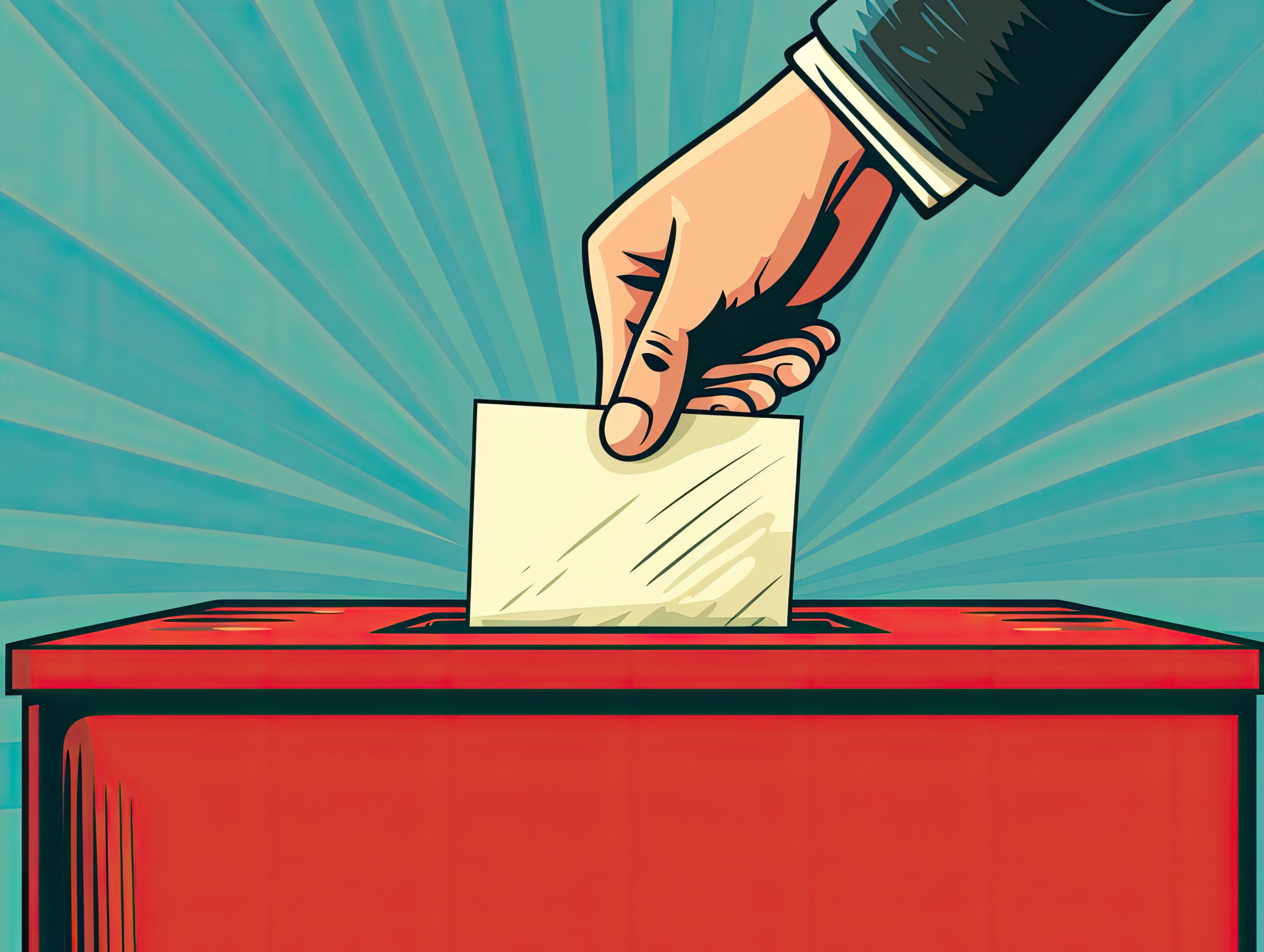
This year may be the ultimate political election year. National elections are expected in at least 64 countries and the European Union, representing nearly half the world’s population. The election climate is expected to be intense, with audiences displaying heightened political polarization and division.

Whether you’re a political sender or not, it’s important to stay informed, adapt to the shifting political climate, and be mindful of your audience’s sensitivities to effectively navigate your way across the political landscape.
Let’s look at some of the ways email marketers can avoid potential political pitfalls during an election year.
1. Pay attention to customer behavior
In a climate that is already politically charged, consumers will face increased political and economic uncertainty. On top of that uncertainty, political rhetoric tends to be emotionally charged, often directed at core beliefs and values. Even if you aren’t sending political emails, your subscribers are recipients of political emails, texts, and ads from others—and may feel bombarded and fatigued by the sharp increase.
To connect with subscribers and break through all the political noise, you need to ensure your messages are impactful (yet tactful), relevant, and value driven. Capture subscriber preferences, both behavioral and self-selected, and leverage the data to send messages your audience wants to receive, at a frequency that matches their interest.
Test a variety of promotional tactics—from discounts and free shipping to convenience options and exclusive loyalty incentives—and measure audience response to inform ongoing strategy. By doing so, you can increase the likelihood of capturing subscriber attention, earning their loyalty, and achieving your marketing objectives, regardless of the political climate.
2. Understand customer expectations
While understanding customer expectations is always good for business, it’s imperative during an election year. Will your target audiences expect your brand to make a clear stand on political issues or to stay out of the conversation? Employ demographic data and personas to know where your customers will likely fall on the spectrum when it comes to brand and political alignment.
For example, a study by Edelman found 64 percent of Gen-Zers reported buying from brands based on their beliefs. The study also reported Gen-Z is more likely to purchase from brands that support the causes they care about most, like sustainability, mental health care, and racial and gender equality.
Different segments may have different expectations, and you’ll need to dive deep into your audience’s preferences and formulate a strategy that makes sense for both your brand and audience to chart the right path.
3. Stay on brand
Some brands feel tempted to play into the election by making statements, elevating a candidate or issue, or generally participating in the election conversation. If activism and cause-based marketing are already part of your brand identity, by all means, continue! If not, don’t feel the need to participate in any narratives that don’t fit your brand.

At the time, Patagonia co-founder Yvon Chouinard said “I want the environment to be a much bigger part of the political process.” Today, the company continues to focus on activism, even implementing a “self-imposed one percent Earth tax for the planet.” Patagonia is an example of a brand being authentic and true to their mission when taking a stance on political issues.
4. Be flexible and willing to pivot
As you’re planning for 2024, keep a finger on the pulse when it comes to your customers. A rising tide of political rhetoric can test the tolerance of consumers, so you need a data-driven plan to know when and where to make email program changes.
To start, benchmark your email program KPIs so you can easily identify any vulnerabilities, including monitoring subscriber complaint rates to investigate any spikes or increasing trends.
Beyond your campaign metrics, understand how the political environment is influencing consumer sentiment for your target audience so you can adjust email content accordingly. Using trendspotting tools like Google Trends and social listening will be especially important since these tools can help you find what consumers are talking about in real time.
Also, pay attention to key election dates. Marketers may want to avoid sending campaigns on these dates, as consumers may be distracted. In the U.S., the presidential election is November 5th, just ahead of many email marketers’ critical holiday sends. So even after the election is over, marketers will want to be aware of how the outcome may impact consumer sentiment.
5. Learn from the past
Email is no stranger to politics. In September 2022, Gmail launched a four-month pilot program to allow political senders to bypass its spam filters. In this election year, Gmail and Yahoo have released new sender requirements focused on email authentication, complaint rates, and one-click unsubscribe.
These requirements set a new standard for the email industry and define the factors that will result in email being blocked or relegated to the spam folder. Gmail and Yahoo have made it clear that these rules apply to all bulk senders, and there will be no preferential treatment—or inbox placement—for those who don’t comply. Make sure you know the requirements and enforcement timeline so you can comply.
Master the (email) campaign trail
During election season, email marketing can become more challenging. Increased competition in the inbox, shifting consumer priorities, potential regulatory considerations, and the need for careful timing and messaging are just some of the challenges that marketers may face. But marketers who stay informed on the shifting political landscape can optimize their email marketing efforts and achieve better results.
To stay in the know on all things email as 2024 progresses, tune in to our monthly State of Email Live webinar series.

